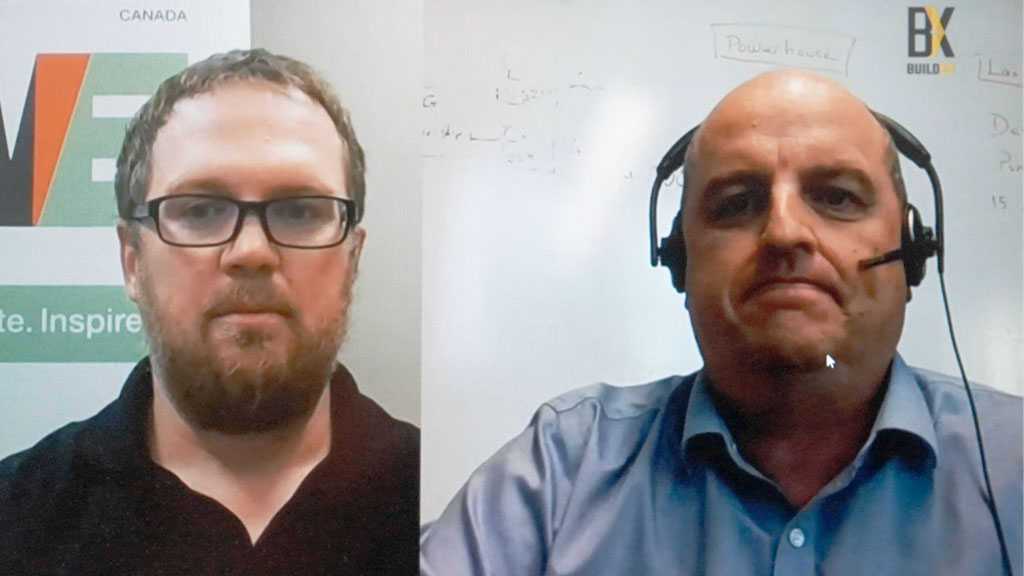Those new high-performance windows or that efficient boiler might look like a smart way to achieve energy targets but sometimes the most sustainable technologies are not well suited to a new building or a retrofit.
Don’t force a fit because of a technology’s “great reputation,” said Matt Fenwick, manager of construction science of the Edmonton Branch of Williams Engineering Canada.
Fenwick and colleague Quenton Kusiek presented a webinar at BUILDEX Alberta recently on the subject. With Williams Engineering, the pair has seen many sustainable measures that didn’t measure up.
They say typically there are five common issues that cover most of those failures:
- right technology, wrong application;
- product not ready;
- unforeseen or unintended consequences;
- over-reaching; and
- inadequate engagement.
Fenwick pointed to LED design, common in building retrofits, as sometimes being unsuccessful, particularly with earlier-generation LEDs.
As an example, he said some of the first LED streetlights failed because their fin housings, which were designed to reject heat, acted as bird perches. Bird guano clogged the fins causing overheating.
In another example, an LED design didn’t take into account that one of its attributes (generating little heat) would work against it in the proposed application.
The project called for a $1.6 million lighting retrofit to a retail outlet. It was initially tabbed at a 4.73 year payback based on maintenance and electrical savings. An energy audit, however, concluded the cooler LED lights would result in coldspots in the store during winter, bringing the payback up to 7.8 years.
“The LED was still a good idea but if it had proceeded without addressing the heating issue there would have been big problems,” Fenwick told the webinar.
Long a proponent of lighting controls for their energy savings features, Fenwick eventually changed his view because controls often fail to address how people use their spaces. Furthermore, controls can “become complicated” and difficult to use.
He said when Williams Engineering did an energy audit on a five-year-old arena with two ice rinks it discovered that the automated lighting controls were bypassed after day two because the schedule was programmed wrong and the rinks were constantly in use.
“They just switched it (lighting) on first thing in the morning and switched it off at the end of the day.”
Williams Engineering has also seen examples of passive ventilation fail.
In mild climates such as B.C.’s Lower Mainland, passive ventilation has consisted of elevated operable windows to remove hot air and let cooler fresh air inside. In recent years, however, the smoke from wildfires has prevented occupants from opening windows, resulting in heat buildup, said Kusiek, who is the team lead, mechanical at Williams Engineering.
He said passive ventilation problems can be exacerbated by the new B.C. building code which requires high air tightness standards, increased insulation and bolstered glazing performance. While the measures improve energy performance in winter, they can contribute to trapping heat inside buildings over the summer.
Kusiek said while geothermal heating is sustainable, robust and resilient, it is not the best option in every application.
In Alberta, where electricity rates are low, energy models show geothermal is not a money saver largely because the initial capital costs don’t support a “reasonable payback” period, the presenters stated.
An example where an energy savings feature failed to meet expectations was the installation of triple glazed windows at a hospital in the Northwest Territories. Modelling showed that energy savings were negligible relative to the overall energy use of the facility, he told the webinar audience.
The money for triple glazing should have been allocated to other energy saving technologies, Kusiek said.
Energy modelling itself can be at issue in some sustainable designs, he added. For example, 3D and 2D modelling can provide different design solutions to prevent thermal bridging.
“Complicated building envelopes can be designed with great insulating properties, but the weakest link can be overlooked, which adversely affects overall energy performance,” he added.






Recent Comments
comments for this post are closed